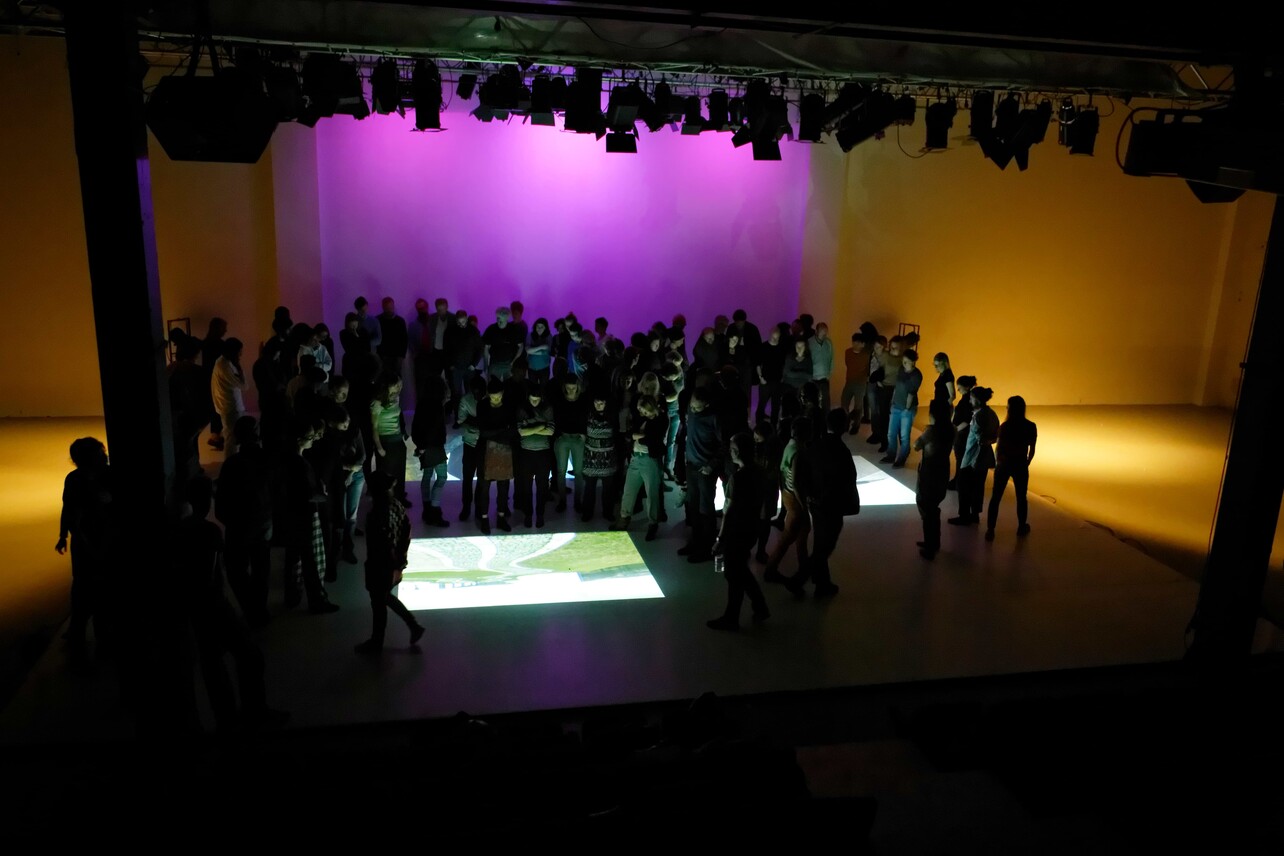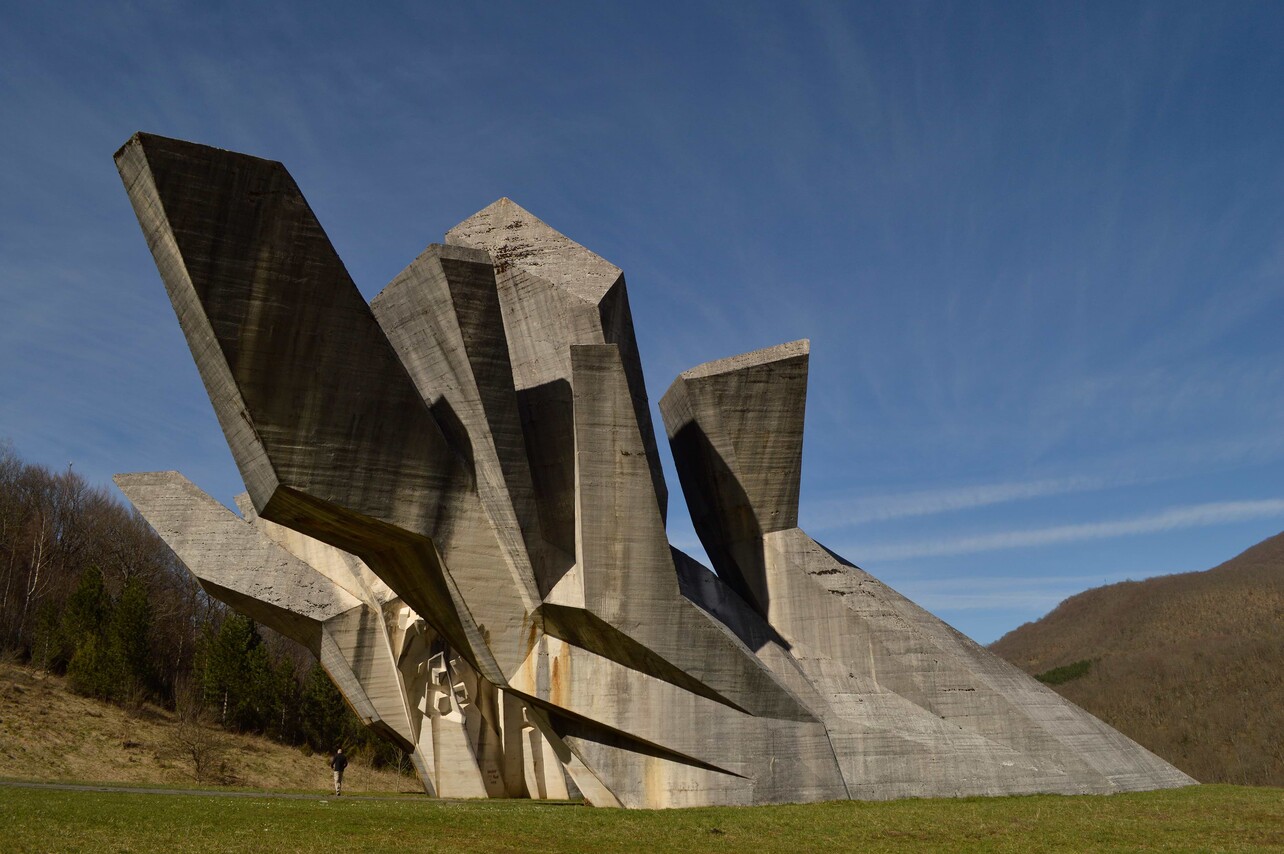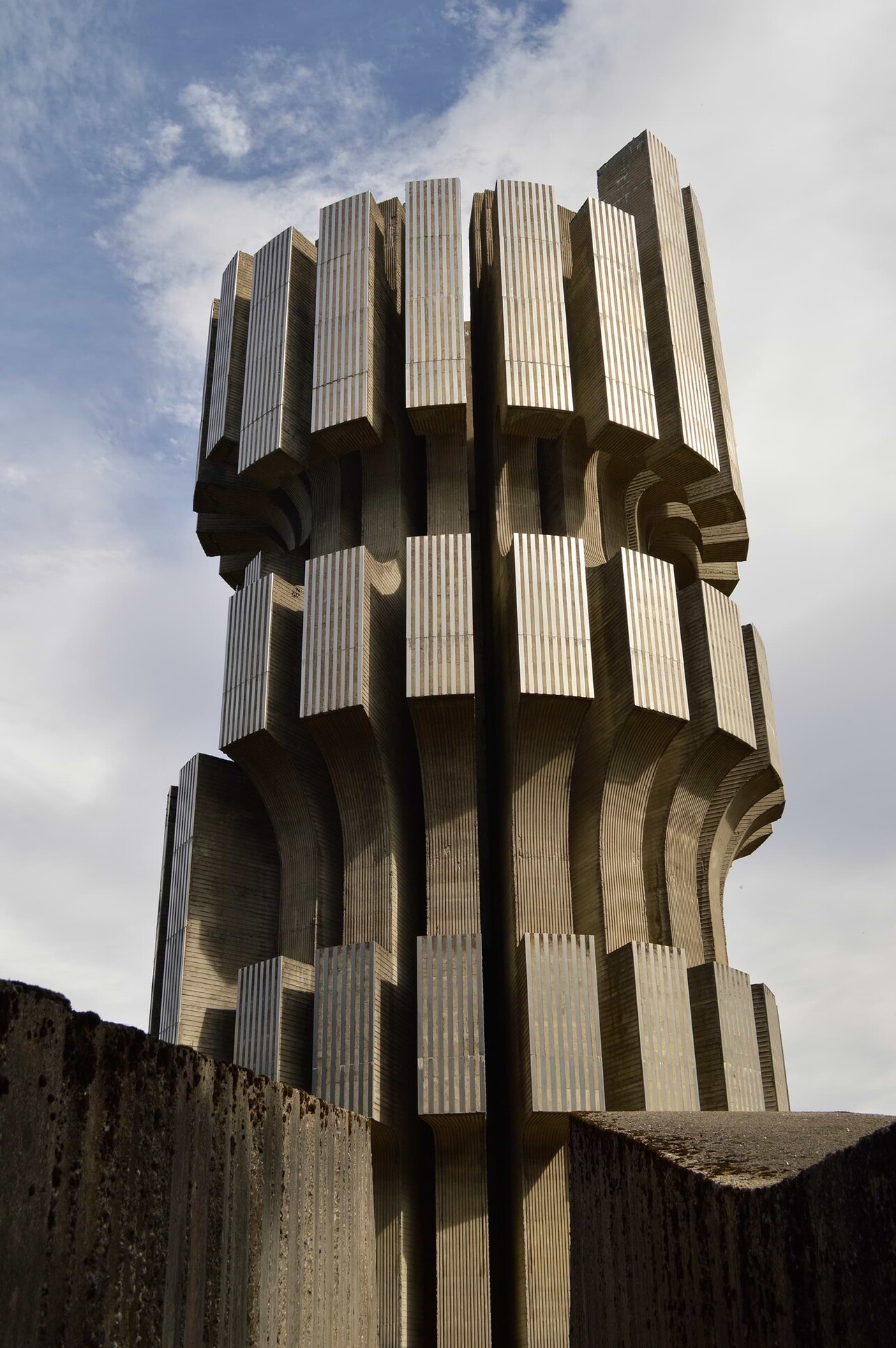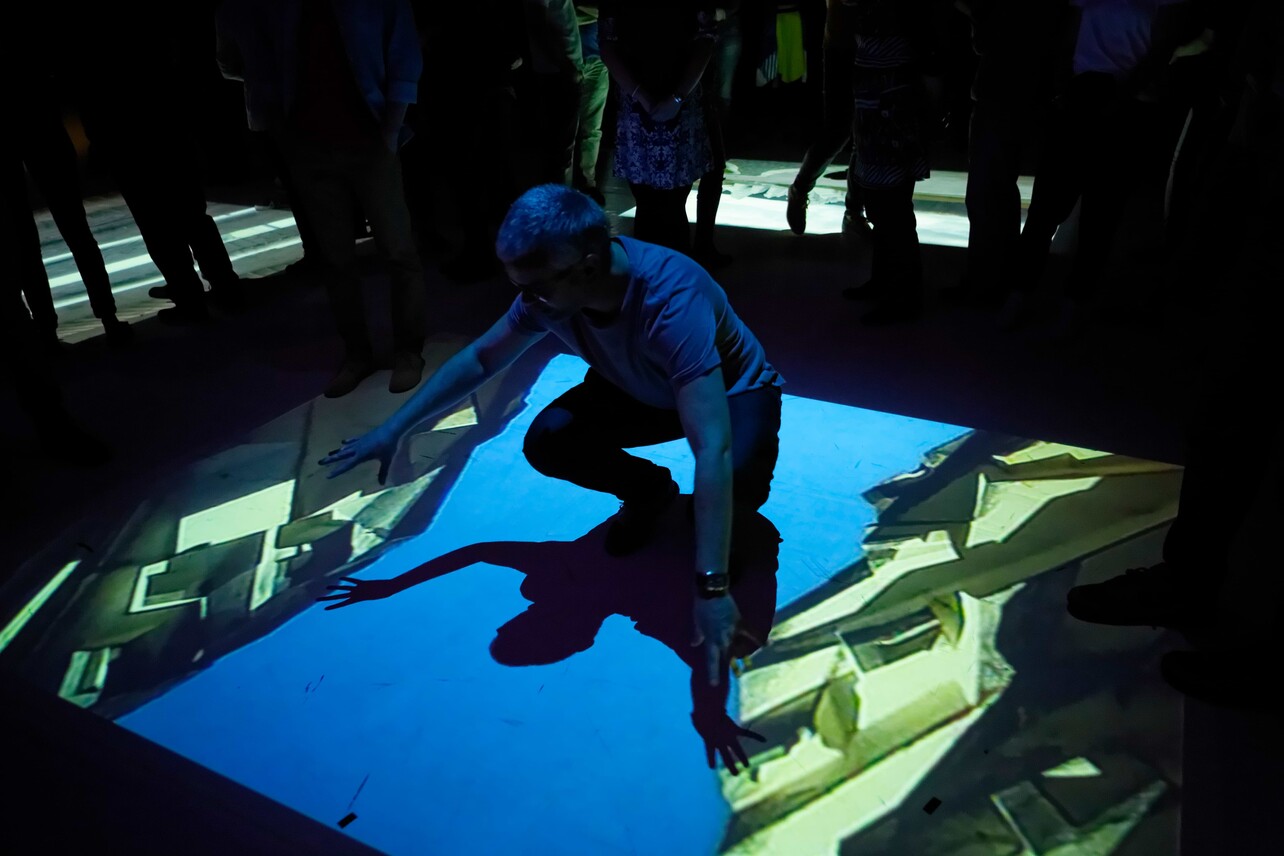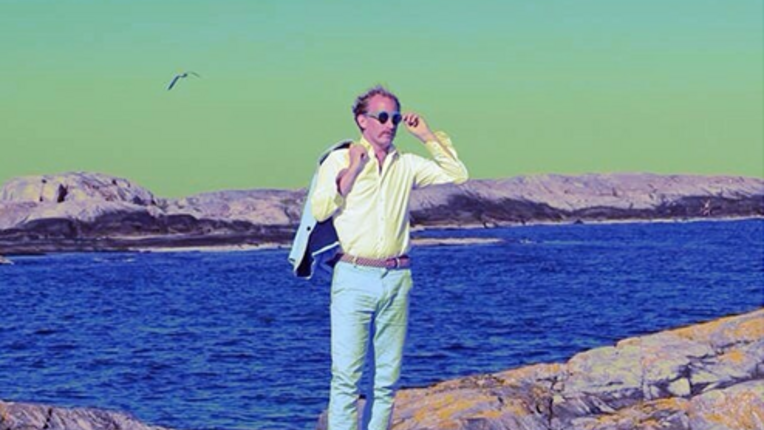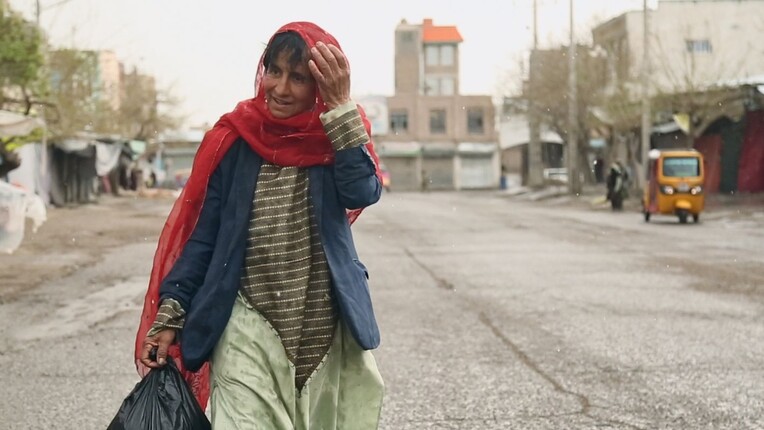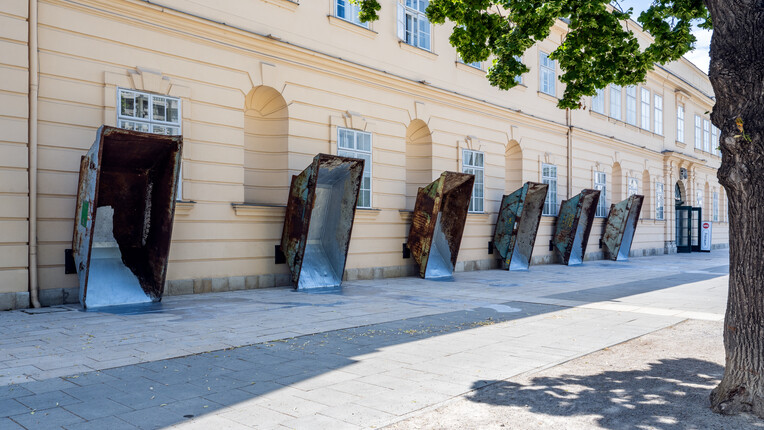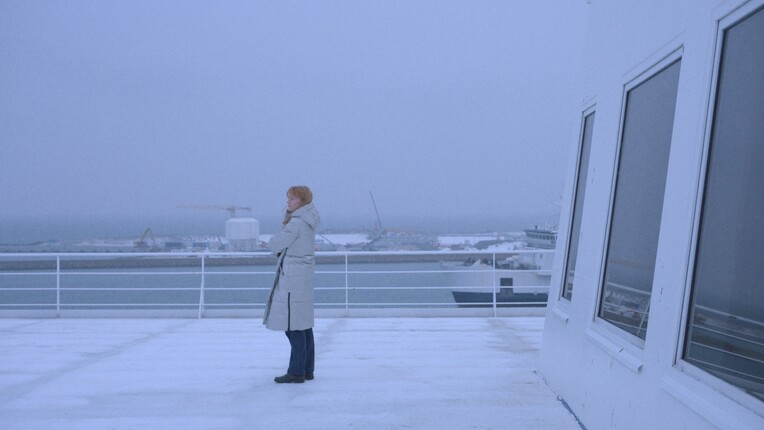
“I decided to read the memorials themselves as choreography scores”
In the past four weeks, Vienna was once again host of numerable international performance and dance artists that participated in the ImPulsTanz Festival.
In various locations the audience could witness performances that deal with all sides of society. Future Read in Concrete and Stone for example invited the Viennese people to explore three Yugoslav monuments in a very physical and participatory way, to read their history as part of the future. We met the director, Bojan Djordjev, to talk about his inspiration for the piece, the state of these monuments today and the way they might be able to impact society.
What inspired you to do this kind of performance, to use this subject?
The inspiration for this particular performance comes from several sources. I have been dealing with the heritage of the leftist idea throughout the 20th century and generally the critique of capitalism that appeared in many forms, but also with the particular Yugoslav heritage, or Yugoslav Marxist heritage. The piece that I made before this one was a performative anthology of partisan poetry. When I started working on it, collecting the poems and working with actors, one of the ideas was actually to perform the piece both in an artistic context of theatres, but also to try and come up with an ambience version where the piece would be performed in environments of the memorials. But then when I started thinking about it more thoroughly, I figured out that the memorials actually didn’t need any extra additional content, that they have some kind of performative content of their own – and this is where this piece actually started. It started by exploring this performative content and then deciding to actually read these memorials as choreography scores.
Another crucial reason why I started working with these monuments was actually a visit to two of them. Not the ones that ended up in the piece, but two other ones, one Partisan Necropolis in Mostar, and one in Croatia on the location of the concentration camp Jasenovac, both done by the Yugoslav architect Bogdan Bogdanovic, who spent his last decades actually living in Vienna. So, the actual physical contact with these monuments and the presence in these environments is what initially started the thought process for me.
Also a source for this piece was my very long interest in abstract art and the rhetoric of abstraction. In this particular piece, these two ideas of abstraction and of this leftist thought somehow come together.
As there are so many of these memorials in former Yugoslavian countries, was there a particular reason you chose these three specific ones?
I chose these three specifically because these three offer the idea of choreography most clearly out of all the monuments. Most of these monuments are actually conceived as parcours. Apart from being abstract, they are also a very deliberate dialogue with nature and the environment. They all require some kind of performance of viewing, a performance of reading in order for the people to figure out the meaning or to be able to read the meaning. The three in particular that I chose – Kozara, Sutjeska and Kadinjača – have the most elaborate choreographies inscribed in them and also three different principles that were interesting for me.
Dušan Džamonja describes the structure of his Kozara monument as a game between darkness and light – death and life or victory. Is this something you want to show in your performance as well, this discrepancy between these two things that have to do with the monuments?
The entire performance is actually based on different attempts at reading these three monuments. So yes, these kinds of statements are just some of many that appear in the performance, in this attempt to read the monuments. Kozara for example, the monument to the Revolution, its rhetoric works through display of such discrepancies. I would go even to a more basic level and say that it works as a dialogue of binary units, like full and empty, light and darkness. And in a certain way the composition of the entire monument is actually based on these principles.
But this is, as I said, just one of the many interpretations that these monuments offer. This is also why they are so important and interesting to study in the context of art or in the context of dance, or even in the context of politics, because they are some kind of open structures that just do not work unless you invest your own artistic or political or whatever imagination in deciphering them. They cannot exist if you don’t pass through them in a very physical and literal sense, and in a metaphorical sense as well.
Did you visit all the monuments to think of the movements for the performance?
Yes, Selma Banich, my collaborator and choreographer, me and the photographer Ivan Hrkaš, we visited these three monuments specifically for this piece. We spent one day at each of these monuments. We even slept at the location of Kozara, on Mrakovica Mountain right next to the memorial, so we visited the monument during the day and during the night as well. Then this play of light and darkness really comes into view.
Your performance is meant to invade public space, just like these monuments invade public space. Can your performance be seen as a kind of link between the people and the monuments, that the performance brings the people back to them?
Art takes place in public space, theatre is a model of public space, monuments themselves are models of public space as well. So actually yes, in this performance we are trying to establish this dialogue between the theatre venue as the public space and the monuments as a public space that can be hosted in this theatre. That is one of the hypotheses of theatre, that it can host people, ideas, relations and the actual public space of the city. The piece is open ended, it works with the concept of openness and one of the possibilities is actually to invade the public space.
Do you try to get the audience to participate in some way?
The piece is composed of three invitations to the audience, three different ways of consuming the piece. One of these invitations is actually very physical participation.
The performance first premiered in Amsterdam, then you took it to Belgrade and Novi Sad and now you are in Vienna. Was there a difference in reaction between the audience in Amsterdam and then in Belgrade and Novi Sad, depending on the history of their own countries?
Of course the audiences in Belgrade and Novi Sad have a completely different investment because some of the members of the audience actually know these monuments very well. Some older members of the audience remember the rituals connected to these monuments, they remember the mythology. The younger generations in Amsterdam as well as Novi Sad and Belgrade can have absolutely no idea about these monuments. So in that sense there is probably a different investment that is going on there, a different background, but I would say this is more on a generational level than on a geographical one. It is very interesting to explore this, because this leftist idea, when it was happening in Yugoslavia, was happening everywhere in the world in different levels and different interpretations. You have the Soviet block style communism, and then the particular way of communism that was happening in Yugoslavia, as something significantly different, you have social democracy in Western Europe to a certain extent. There are some ideas of it even in the United States up to the late 60s. So the older generations can, I think, recognize some of these ideas better than, for example, the younger generations. It is very curious that some of these monuments, not the three that I worked with but some of the other ones, are in various stages of destruction. Some of them were purposefully destroyed during the war in which Yugoslavia fell apart, some of them were just left to sort of decay.
Is there a change happening in the former Yugoslavian countries? Are they now recognizing the importance of these monuments and what they stand for?
The process that is going on is very interesting. The official narratives of the states that were made after the breakup of Yugoslavia are completely opposite to what these monuments stand for. Some of them were destroyed, some were left to decay and some of them are reinterpreted to somehow fit into these new single-nation narratives. But in all three cases the monument itself is actually stronger than the intervention and somehow it is always in clash with what these new ideologies try to do with it. I think, in a way, they all have a similar destiny but different in detail.
In the trailer video you state that nowadays ”a story of how an enormous, anonymous mass, a strongly motivated partisan collective created a new world and new art, seems like science fiction”. Can you elaborate a little bit on that thought? In today’s society, it seems less common that people unite to fight for something in the way people did back then…
I think it depends on what they fight for. This growth of the left idea and its spreading in the international sense in XX century – through the fight for this idea through the international brigades in the Spanish Civil War, or through the Yugoslav version of anti-fascism, were the peaks of this idea. Right now I think people are uniting to fight for some other ideas.This is why I think it is important to ask questions like “What are we ready to fight for?” “What does this fight mean?”“What are we fighting for?”“What are the fights that are going on in the world right now?” But this is a very difficult subject and I would rather invite people to contemplate about it during and within the piece. Because Future Read in Concrete and Stone is essentially about that – what can we actually learn from working with a particular subject that commemorates a certain idea and what is the role of art in that.
Bojan Djordjev, born in 1977 in Belgrade, is a performance maker interested in collective authorship, discourse based performance and theory-as-practice. His recent performance-making practice revolves around cultural, political and theoretical heritage of the left.
Interview: Lisa Ribar
